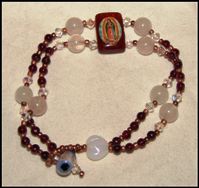By Jody Ekert,
Source: SameSame.com.au
It’s happiness month here on Same Same. In our quest to find an answer to “What makes you happy?” we sent Jody Ekert to a two day happiness workshop, armed only with a pen, some curiosity and a handful of hope. This week she gives us some shortcuts to a more joyous existence.
I’m always looking for shortcuts. So over the two days of the conference I took notes on any easy ways of increasing happiness. I didn’t want airy-fairy bullshit. I didn’t want a definition of happiness that was impossible to achieve. I wanted scientifically proven, practical suggestions to feel happier, whatever that actually meant.
The simpler or lazier the better I figured, and the more likely I would be to put the idea into practice. Then I hit upon the idea of trying to combine all of them into a kind of cheat’s guide to happiness. Below is the end result with some links for further reading. If you do follow one of these suggestions, or all of them, tell us how it works for you. We’d all love to know.
Give up on chasing more money.
This one was suggested by Daniel Gilbert. Increased money does not buy more happiness, beyond a level needed for survival. His book is called Stumbling on Happiness
Learn to trust and ask for the experiences of others.
We’re bad at predicting what will make us happy. But if we seek out someone who is currently living what we are thinking of living, this can guide us. Say, if you think a relationship will fix you, talk to people in relationships. If you think it’s living overseas or buying a house, talk to someone who has just gone through a house purchase or a move. You will probably find these people don’t think they are a million times happier than you.
Meditate.
Mediation has proved to increase the activity in an area of your brain called the insula, according to Dr Richard J Davidson. The insula is considered the area of “mind-body connection”.
An article in the New York Times claims:
“The insula ‘lights up’ in brain scans when people crave drugs, feel pain, anticipate pain, empathise with others, listen to jokes, see disgust on someone’s face, are shunned in a social settings, listen to music, decide not to buy an item, see someone cheat and decide to punish them, and determine degrees of preference while eating chocolate. Damage to the insula can lead to apathy, loss of libido and an inability to tell fresh food from rotten.”
Even as little as a two-week training course, or half an hour a day can help activate this area. Monks who mediate for eons have great insulas apparently. And that’s about as hippy and spiritual as I’ll get with this list. I promise.
Practice Gratitude.
One exercise is to think of someone in your life who has influenced you in a positive way, who is still alive to day. Ring them and tell them you are coming to visit but don’t tell them why. Then write 300 words on how this person has helped you and when you visit them, read it to them. This will probably lead to both parties crying, which is quite normal according to Dr Martin Seligman. Follow-ups show that for anyone who has done this there is a sustained increase in happiness, a decrease in depression and a more positive attitude toward past events – even many months after the visit.
On a daily basis, writing down five things you are grateful for also has a similar effect. I actually use a gratitude web site www.butterbeehappy.com that emails me every day and asks me to record my five things.
Volunteer.
Even two hours a week is enough to show improved levels of contentment and several of the speakers drilled in the importance of giving and it’s relationship to happiness.
Learn to use a bit of CBT (Cognitive Behaviour Therapy).
CBT teaches you to recognise that even though you can’t control the world around you, you can choose how you respond to it and feel about it, and thus how you can choose your own consequences. It is a therapy used to help alleviate depression and change problem eating and behavioural patterns.
Here’s an example of the ABC technique:
A (Action): My friend didn’t ring me like they said they would.
B (Belief): Nobody cares for me. I must be unlovable.
C (Consequence): Depression, anxiety.
CBT would challenge you to pick a different belief. Like, oh, my friend must have been really busy. That allows for a different consequence, like perhaps picking up the phone yourself.
Visit friends.
A good social network can help with curing depression and even lower the risk of coronary heart disease and high blood pressure, according to Sophie Scott in her book Live A Longer Life.
Chocolate and red wine.
Two squares of dark, cocoa rich chocolate a day is all you need, and a glass of wine. The chemicals involved can make you feel happier and healthier, also according to Sophie Scott. Like you needed another reason.
____________________________________________________________________________________
How to Live With Yourself and Automatically and Simply Love Yourself to Pure Freedom, Health, Wealth and Relationship Success
The fastest way known to man to a Final Solution to all problems.
A truly and absolutely practical how-to guide. Learn more here...







No comments:
Post a Comment